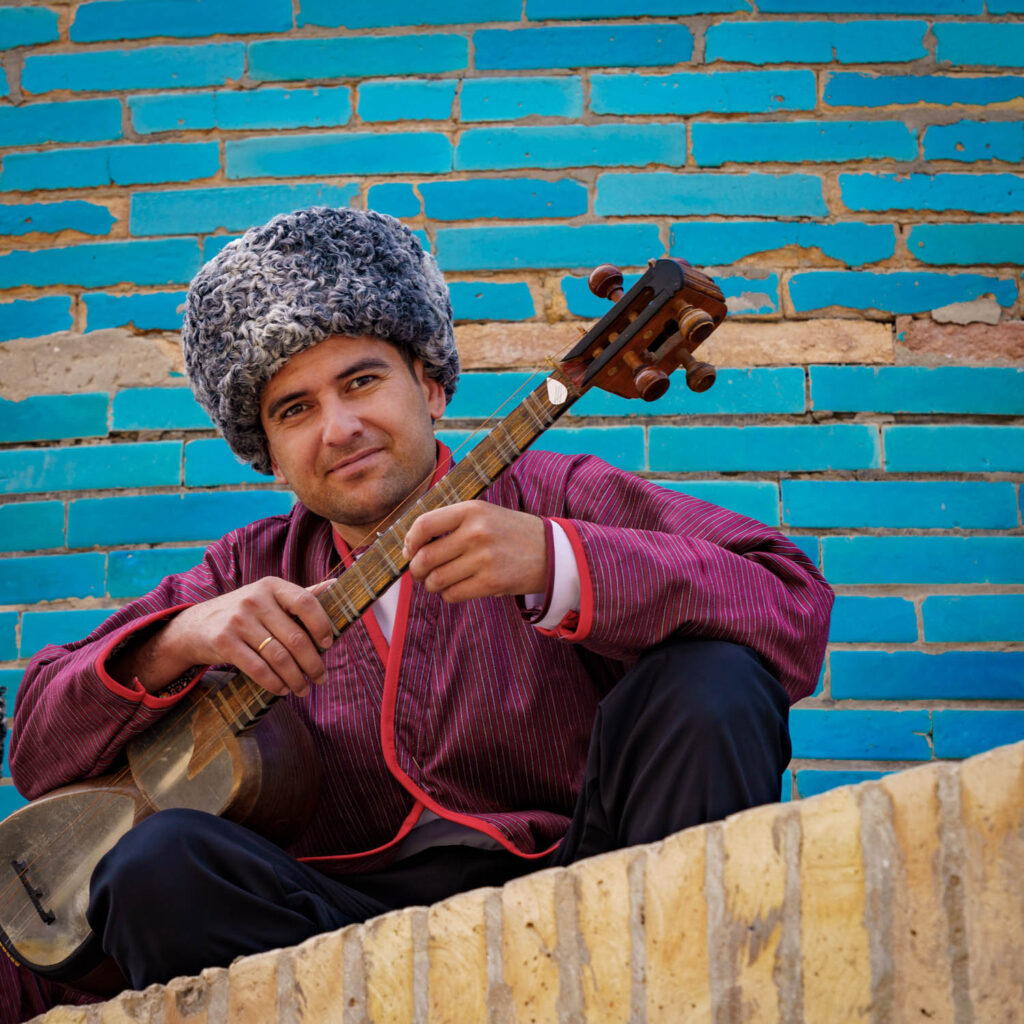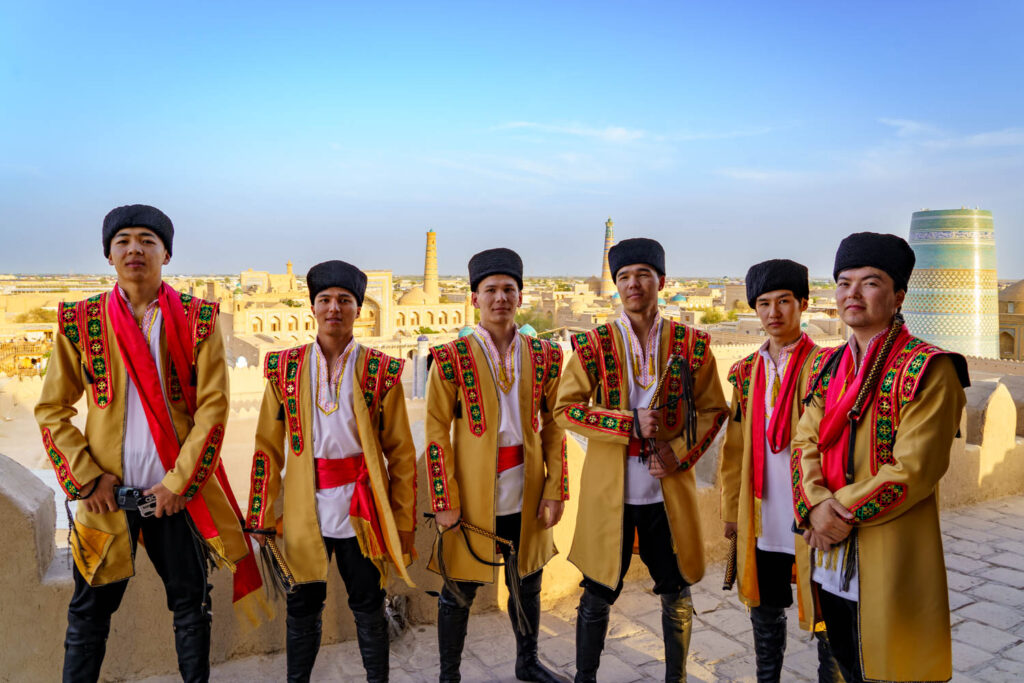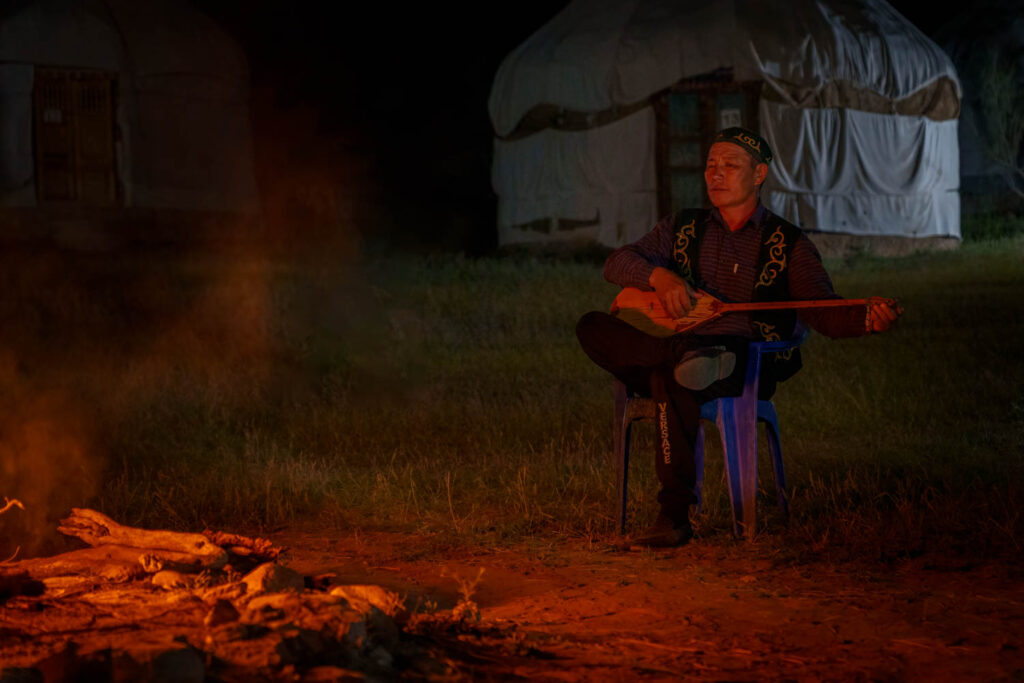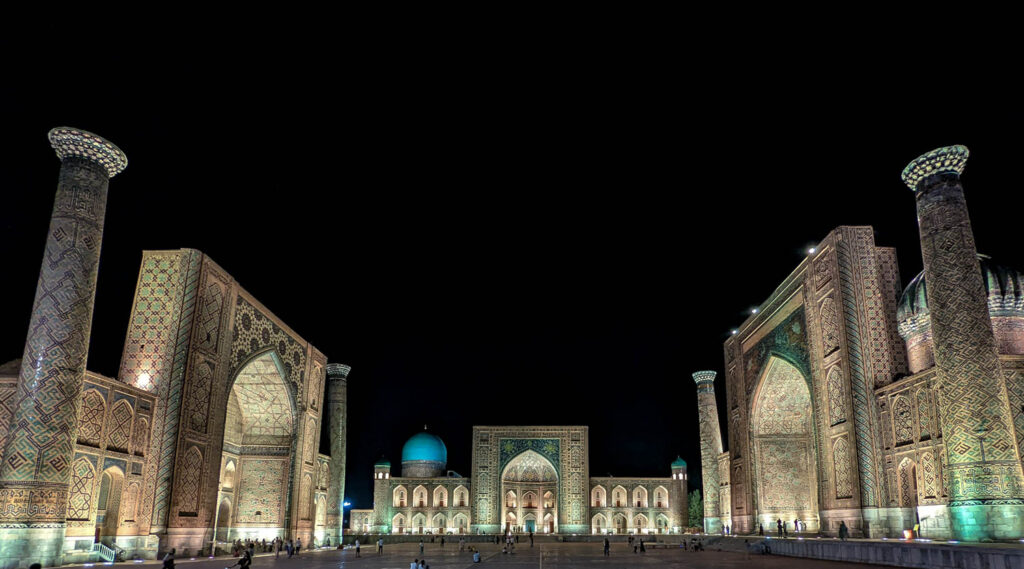Uzbek Odyssey: A Land of Ancient Cities and Silk Road Secrets
Uzbekistan, a land steeped in history and exotic allure, had been on my bucket list for years. Finally, in April 2022, after countless covid lockdown delays, I found myself on a plane bound for Tashkent, the capital city. Uzbekistan Airline’s slogan is “Good luck!” I wasn’t sure if this was a wish of benevolence, or a cryptic warning?
Monuments and the Metro
Landing at 3:30am, bleary-eyed but brimming with excitement, we navigated customs and baggage claim. After a brief two-hour nap at the hotel, we hit the ground running, exploring Tashkent’s historic quarter. The Monument to Courage, a somber reminder of a devastating earthquake that struck in 1996 and levelled a large part of the city, stood in stark contrast to the vibrant energy of the markets and mosques.
The Tashkent metro, a marvel of Soviet engineering, whisked us through stations adorned with impressive murals. Emerging at Independence Square, we found ourselves dwarfed by the imposing statue of Timur, a legendary ruler of the region in 1300CE.

Castles and the Cultural of Khiva
Day two brought an early start and a flight to Urgench, gateway to the ancient city of Khiva. Here, the legacy of the Silk Road unfolded before our eyes. Khiva was abuzz with activity, a local dance festival was attracting throngs of visitors and troops of traditional performers, complete with regional costumes, filled the air with music, adding to the vibrant atmosphere.


The next few days were dedicated to desert castles. Qizil Qala, heavily restored, showcased the ravages of time on mud brick structures. Toprak Qala offered a glimpse into the past, with remnants of Zoroastrian worship and frescoes stolen by the Russians (and now displayed in the Hermitage Museum in St Petersburg). Finally, Ayaz Qala, a trio of unfinished castles, demanded a challenging climb but rewarded us with breathtaking views.
Bukhara’s Architectural Highlights and a Chance to Relax
The long journey from Khiva to Bukhara was an adventure in itself. A brand-new highway slowly morphed into a bone-jarring dirt track, a testament to Uzbekistan’s ongoing infrastructure development.
Bukhara, a city brimming with architectural gems, unfolded its beauty slowly. The intricate brickwork of the Ismail Samani Mausoleum, the captivating Bolo Hauz Mosque with its “reflected pillars,” and the imposing Ark Fortress, all whispered tales of bygone eras.
The Sitora-i Mokhi Khosa, a whimsical summer palace, captivated me with its colorful decorations and courtyards teeming with peacocks. Chor Minor, a quirky, stubby structure, stood in stark contrast to the Lyabi House complex, a collection of madrassas and a caravanserai.
Along the Silk Road
In search of relaxation after thoroughly exploring the city, I ventured to the Bozori Kord Bathhouse. The traditional steam, scrub, and massage treatment was a welcome respite from the scorching heat and the constant exploration. However, the buckets of freezing water they finish with are always a bit of a shock!
The Gijduvan Ceramics Museum showcased the artistry of generations, their pottery-making techniques passed down through time. The current head of the family, Abdullo Narzullaev, was recently awarded a National Master Artisan award by the current Prime Minister of Uzbekistan.
About an hour further on, Malik Rabat, a crumbling caravanserai, stood as a solitary sentinel, a testament to the bustling trade routes of the past.
Due to the distances, we were covering we spent the night in a yurt camp in the desert. Basic amenities were overshadowed by the starry expanse above and the haunting melodies of a dombra player who joined us after dinner and serenaded us by firelight. Early the next morning, a trek led us to Lake Aidarkul, a vast body of water with a hints of future resort development along its shoreline.

Echoes of the Past in Samarkand
Continuing or odyssey we arrived in Samarkand which unfolded its magic and many sights. The Observatory of Ulughbeg, built in the 1420s was a testament to its Timurid namesake’s astronomical genius. It stood in stark contrast to the Shah-i-Zinda Mausoleum ensemble, a dazzling display of blue and black tilework. The earliest buildings dating back to the 11th and 12th century.
Next up were the Hazrat Khizr Mosque, an ancient Zoroastrian temple, and the magnificent Bibi-Khanym Mosque, a restored masterpiece, which transported us back centuries. Finally, I savoured a steaming plate of Plov, the national dish of Uzbekistan, in the shadow of Registan Square.
Registan Square, the heart of Samarkand, is a photographer’s paradise. The three magnificent madrassas lining three side of the square, illuminated at night in a kaleidoscope of colours, are a sight to behold. May 1st, a national “fountains day,” added to the festive atmosphere as families gathered to enjoy the water displays and music.

The Afrasiyab Museum housed a fascinating mural unearthed from an archaeological dig. Although I suspect some artistic license was taken on what exactly the frieze showed as it was quite damaged in places. The Jewish cemetery, with its intricately carved tombstones, offered a glimpse into a different facet of Samarkand’s rich history.
A final visit to Registan Square, this time under a cloudy sky, allowed for a different perspective on its architectural grandeur. Bidding farewell to Samarkand, we boarded the high-speed train back to Tashkent, our Uzbek odyssey complete. Uzbekistan had woven its magic, leaving us with a treasure trove of memories and a yearning to return someday.

